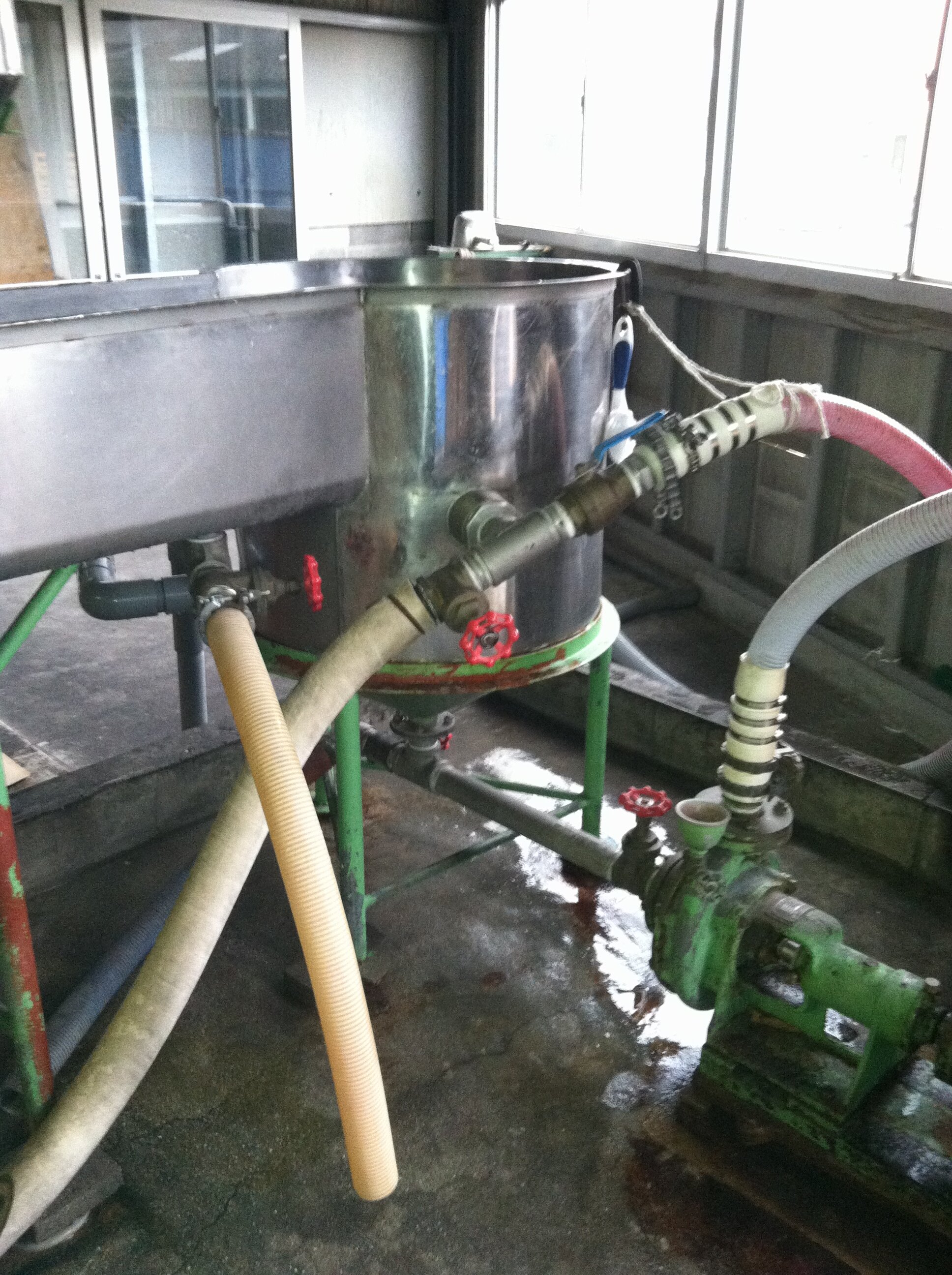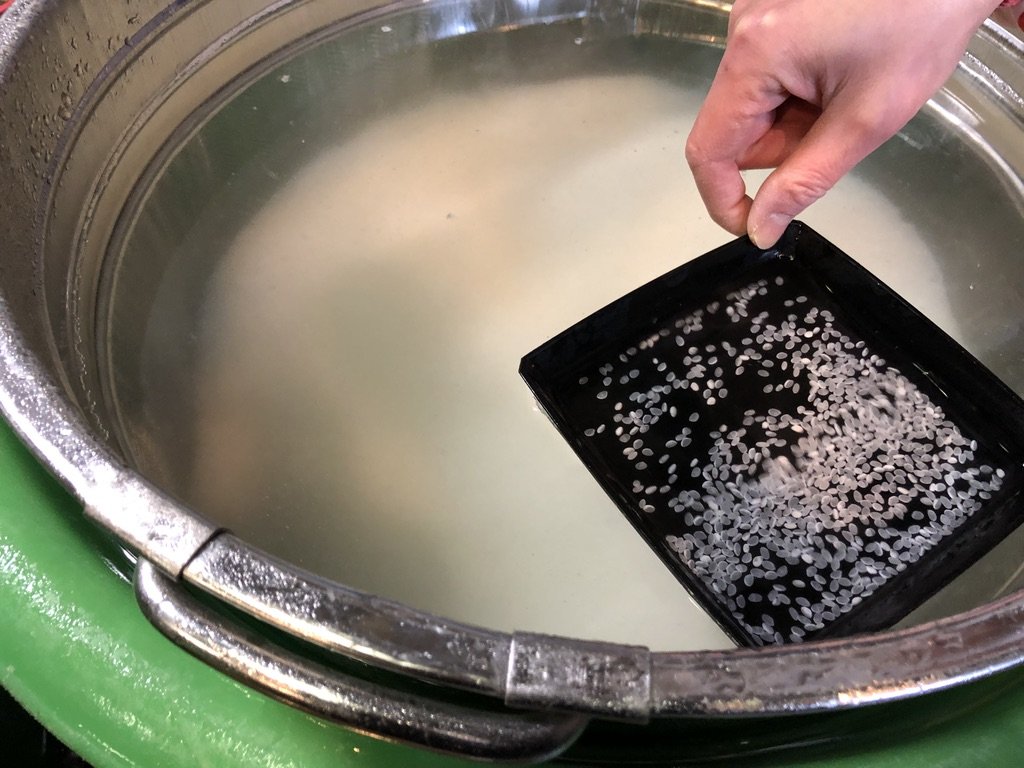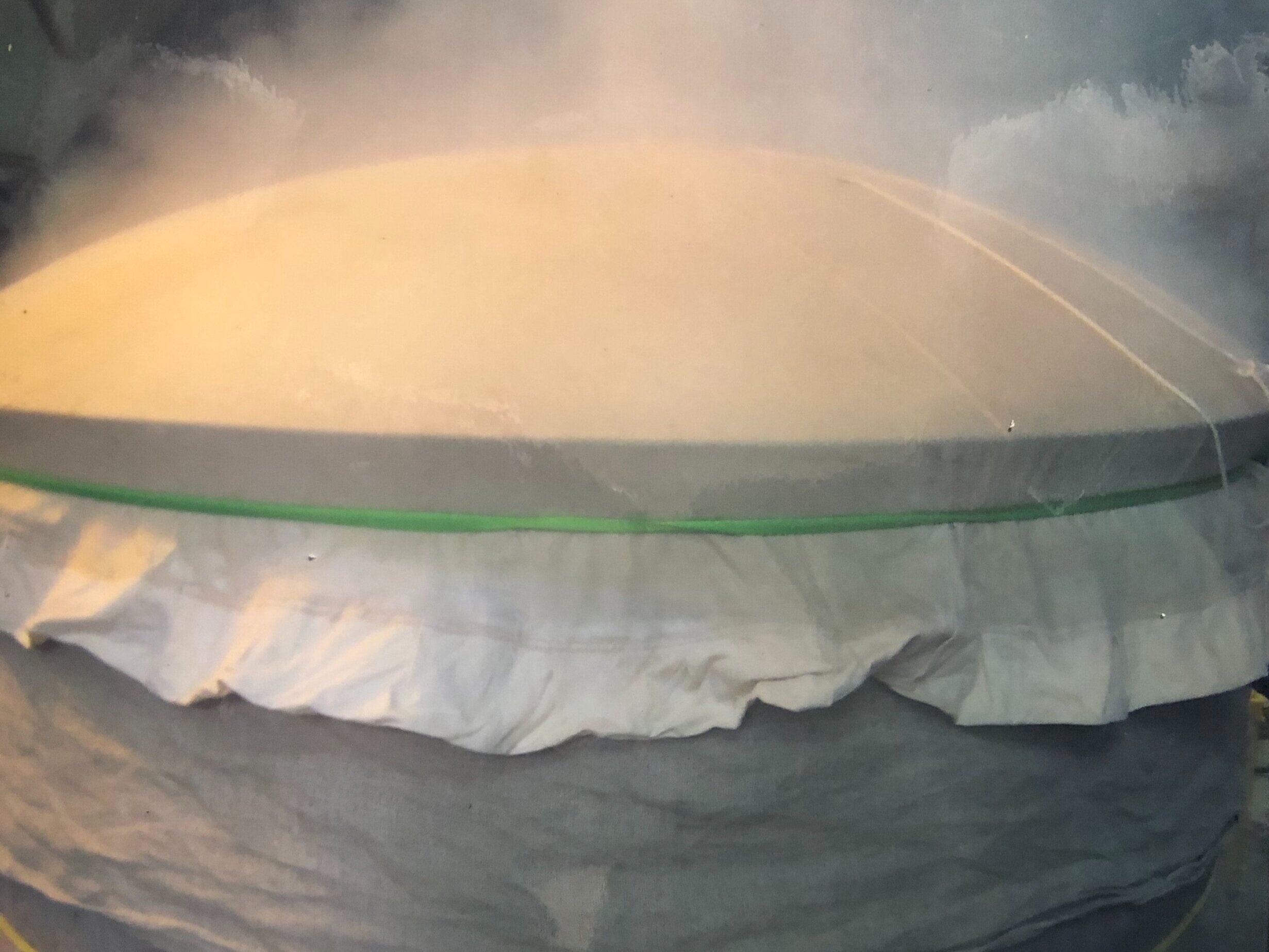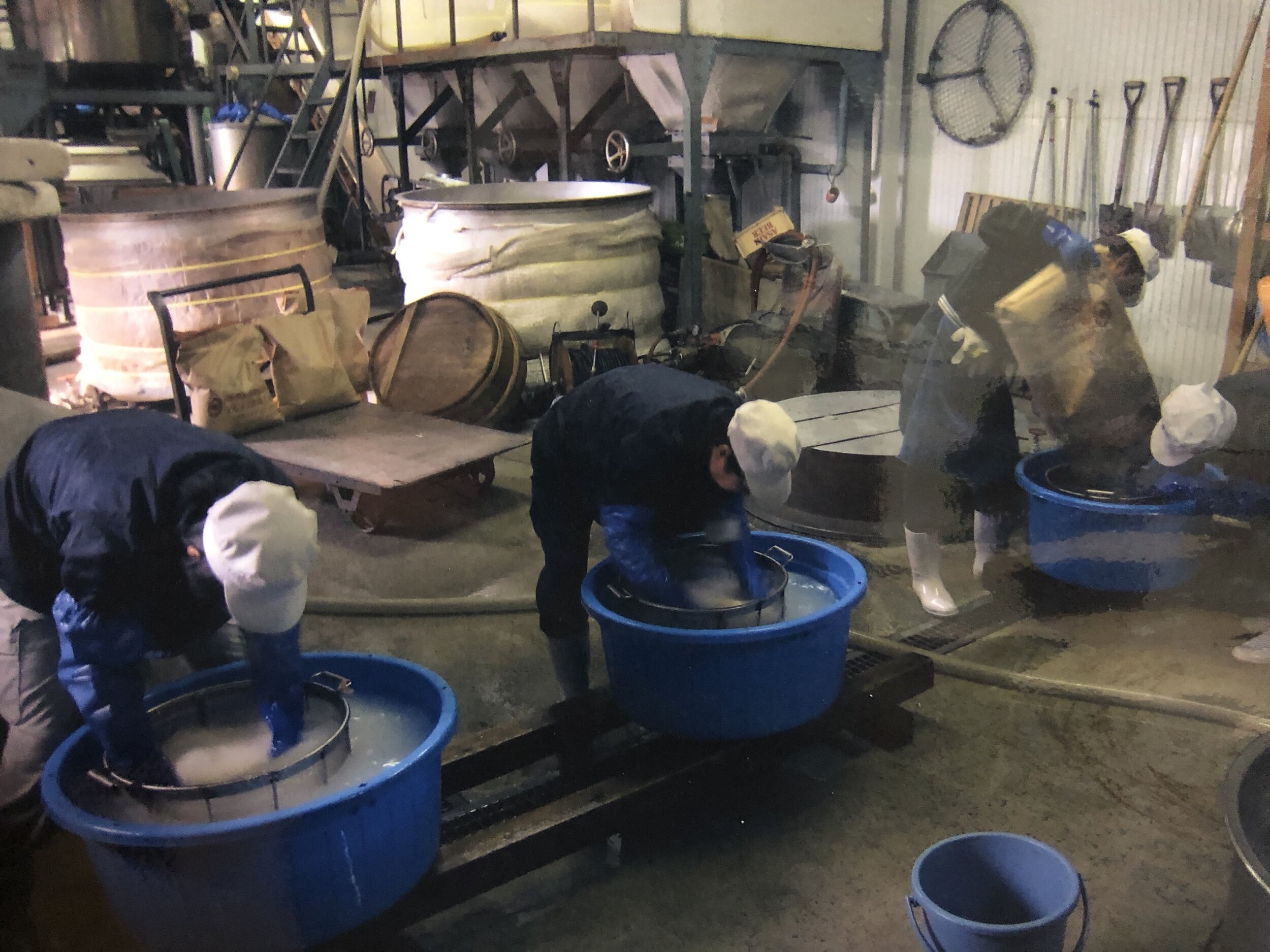
Sake Production
Step 3. Washing & Soaking

Washing / Soaking
Following the heat generating milling process, to prevent cracking, the rice is allowed to cool and rehydrate to the ambient humidity; this may take several weeks. Prior to steaming, individual batches of rice are precisely weighed to the gram, then washed to remove the unwanted rice flour (Nuka), zipped into nylon bags and soaked in cold water until achieving the desired internal moisture. Target moisture averages 28-32%, depending on the nature of the rice, the grade, and the style of sake to be brewed.
Colder water is absorbed more slowly and uniformly by the milled rice than warmer water. The optimum temperature for these two steps ranges from 2C – 8C (35F-46F). Water temperature is one more reason artisan brewers limit their season to the coldest months of the year.







